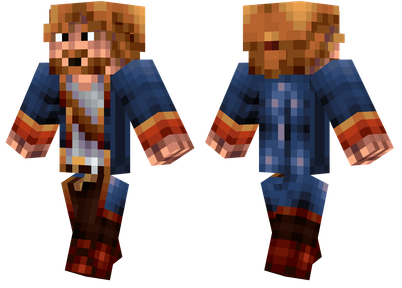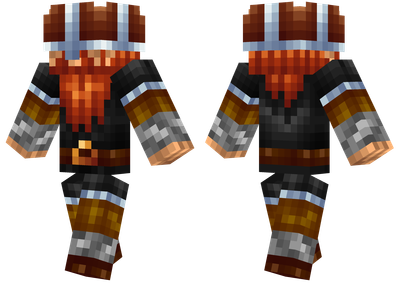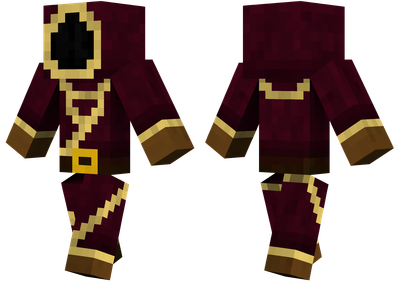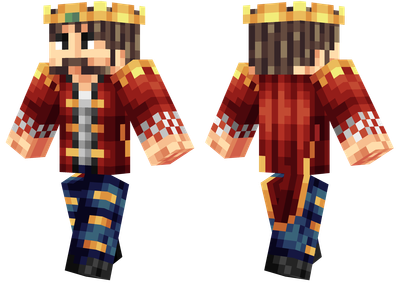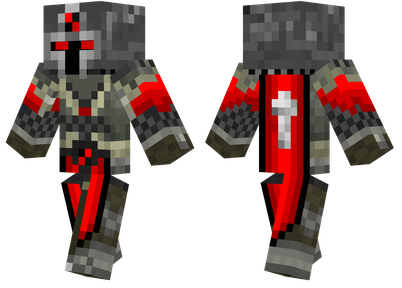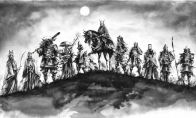Inertia guidance of artillery
First of all, the data in this tutorial are calculated by themselves. It is absolutely true and credible. If you find that there are inconsistencies in the application, you can discuss with me.Sincerely apologize, but if you calculate the error yourself, don't come to me
When we and our friends use the middle door of the artillery, we are often easy to band, and the guidance is necessary at this time.There are more dry goods in this issue, which may be too boring for some people. Please check as appropriate.
From two aspects, we need to control the elevation angle and deviation angle, and we need to know the parabolic line of the cannonball and the straight line distance between the cannonball. At this time, we can convert the relationship between the range and distance into a secondary function.The following part is the derivation process. The comrades who do not want to see can move to the final conclusion part
Derive
Due to limited technology, it is impossible to pick up code directly.
I can only push the expression from the perspective of control from the perspective of control. I still use the classic full -time with the next steel artillery as an example.The next session of the steel artillery is loaded with eight verses of the maximum gunpowder). By taking special value, the following form is obtained.
In this picture, the impact of the angle on the distance of the cannon bullet is displayed. In addition, because the elevation of this artillery is limited to 60 degrees, all the experiments on all angles are studied at 0-60 degrees.
The rotation angle set in the programming gear box is different from changing the elevation angle of the artillery.For example, the programmable gear box is set up with double -rotating ninety degrees, but the artillery is only rotated about 11 degrees.After calculation, the ratio of the setting angle between the elevation angle and the programming gear box is about 1: 0.13 (error, ± 0.1).The speed in the programmable gear box has no effect on the elevation of the artillery, which is only related to the rotating degree of the setting and the rotation direction.
My idea is to turn on a shot every time, calculate the average value of each increase, but until I tried twenty degrees, the distance between each time is very unstable.The time of time, artillery is also easy to stuck, so research is difficult.
In short, after being boring to study, I got the following table
As shown in the figure, the relationship diagram of the angle and the range (most of the errors come from the angle of the artillery, divide the four houses and five after 0.13, because the programmable gear box can only be set up)
y = -0.406x2 + 26.57x + 97.043
In this expression, R2 = 0.9873, we can see that the function expression of this function is already close to the actual situation.
As for the distance from me mentioned above, the distance changes are very unstable. From the table below, it can be seen that
Therefore, in the game, the actual distance will be swinging between the ± 4 grids of the y value obtained (but the shell with a wide range of explosions can make up for this error)
Then you must explore the impact of the number of gunpowder on the range, the impact of the shell on the range, and the range of the artillery of different materials.
The impact of the number of gunpowder on the range of artillery
We also use the next steel as an example. From full matching, reduce the number of gunpowder in turn, take a few angles, and observe the phenomenon of different range at the same angle.
The data after the experiment is shown below
First of all, according to the different gunpowder, the cannon cavity and gun tube are modified, and the data (red frame part) is obtained., So the actual range of the shells is increasing. After I make up for this distance, I get the second part of the data (yellow frame part), and then calculate the difference between each two data to get the third part of the data (blue box part)In the last line of data in the blue box, the average of 20 degrees, thirty degrees and fourth degrees, the average number of the distance between the reduction of the gunpowder is reduced, and the average of these three numbers will be obtained.Data on the far right of the last line of the box part of the box)
But the matter is not over here. We also need to know the relationship between the material and the amount of gunpowder. I used steel, cast iron and bronze artillery again to test the following data
For every reduction or additional distance of gunpowder changes
Next steel
77.66667
steel
71.22222
bronze
60.66667
cast iron
36.33333
Until now, we can officially make a conclusion:
1. The range of artillery is increased as the amount of gunpowder increases.
2. The artillery of different materials is different. The better the material, the greater the influence.
The role of this conclusion will explain it for a while, and we will go to the next experiment.
The effect of artillery shells on the range of artillery range
There are currently five types of shells in the game, namely grenade, hard -headed bomb, grape bombs, high explosion bombs and armor -piercing bombs.
My plan is four types of dotians, hard head bombs, grape bombs and armor -piercing bombs, which are loaded on the full -equipped artillery of the next steel, steel, bronze and cast iron, and also on the artillery ranging corner of 20, 30, 40 degrees.For launch, the gap between comparative distance and control group (high explosion bomb).(The reason why the high explosion bomb is used as the control group is that the experiments mentioned above are mainly high -explosive bombs. ThereforeThe purpose of this experiment)
The process of experiments is omitted, similar to other experiments. We directly say the conclusion:
The type of cannonball has no effect on the range of artillery
Then we do the next experiment
The effect of artillery of different materials on the range
Earlier, we have conducted a detailed research on the next steel artillery. Now we only need to apply this set of experimental methods and modes to the artillery of other materials to get the data quickly.
Direct data:
We can obviously observe that the scattering point of bronze and cast iron artillery and the trend line is very unstable, especially bronze, and the point is almost not crushed to the line.(Speaking is not allowed to fight)
The value of the R square here is not equal to 1 because there is an error, and the error can only be reduced and cannot be avoided. Therefore, in a strict sense, the deviation of the R square value does not have much effect on the calculation.
in conclusion
All experiments in this tutorial involve iron and wooden artillery because they are too short to do not need to guide accurate guidance.
The range formula of the artillery range of four materials is as follows:
Next Steel: Y = -0.406X2 + 26.57X + 97.043
Steel: Y = -0.2057X2 + 14.87X + 78.873
Bronze: Y = -0.0956X2 + 7.288X + 49.23
Cast iron: Y = -0.0259x2 + 2.0306X + 20.836
These are the formulas of the full -match artillery. It doesn't matter if the artillery is full.(The meaning of the full match is to achieve the maximum gun loading capacity of the artillery, and the full -line steel artillery represents the next steel artillery to load eight verses of the most of the gunpowder)
And there are two types of applications: knowing angle distance and knowing distance and calculation angle
Know the angle calculation distance
The first step, know the angle of the artillery you need
The second step is to connect your artillery base to a programmable gear box. The speed does not matter. Remove the angle of the artillery you need at 0.13.There is a proportional relationship between programming gear boxes, the former is 0.13 times the latter)
The third step is to select the corresponding formula from the four formula above, bring the angle of the artillery into the X value, and obtain the Y value.If your gunpowder is less than the maximum gunpowder carrying capacity of the same material, you also need to use the following formula for the second calculation (the next steel can carry up to eight jackets at most, if your next steel cannon's gunpowder can be carriedIt is seven or less, then the second formula is required)
S = y- (m0-m)*s
M0 = the maximum amount of gunpowder can be carried by the corresponding material, m = the amount of gunpowder that can be carried by your artillery, the distance between S = each gunpowder, the result of the first formula, and the last thing that is obtained is the real distanceEssence
The distance between the change of each section of the gunpowder is shown in the table below. Choose the appropriately brought into the above S (S in the formula, s is two quantities, see clearly, and then substitutions)
Next steel
77.66667
steel
71.22222
bronze
60.66667
cast iron
36.33333
Know the distance between the distance
I believe this situation is more than the first situation, so I do n’t say much nonsense, and go directly to the tutorial.
The first step is to know the distance between the target from your artillery
The second step is to use the formula to calculate the actual range
S = ms
M = The amount of gunpowder that can be carried by your artillery, the distance between s = every piece of gunpowder changes, s = actual range;
The third step, determine whether the S value calculated in the second step can reach the target distance
The fourth step is to bring s into the y in the following publicity, and the value of X
Next Steel: Y = -0.406X2 + 26.57X + 97.043
Steel: Y = -0.2057X2 + 14.87X + 78.873
Bronze: Y = -0.0956X2 + 7.288X + 49.23
Cast iron: Y = -0.0259x2 + 2.0306X + 20.836
("X2" represents the second side of X, not 2x or multiplied by two)
In the fifth step, the solution obtained is the elevation of the artillery. I said earlier that the angle in the programm can be different from the actual elevation angle of the artillery.The angle from obtained is the angle that needs to be entered in the programmable gear box (usually we get two solutions, because the secondary function usually appears on the straight line of the X -axis.It's okay)
The two basic tutorials are over here. When applying, you should pay attention to these two methods to play in the positive direction.The following is the extension.
Precision guidance of the goal of non -positive direction
Some targets may be located on the recipe, and this application is relatively troublesome. We need to use the junior high school Pythagin theorem and triangle function to solve.
As shown in the figure, we assume that the target is at point B, the artillery position is located at point A, and the straight line distance between the two is C.
First of all, we open the F3, remember the A coordinate, and then write down the distance at B, reduce the two XY coordinate values, take the absolute value, and get two data.The phase reduction of x can be regarded as the length of the side B, and the phase reduction of Y can be regarded as the length of the side A.There is a pyrography theorem:
C² = A²+B=
Bring the phase reduction and degradation of x into A, B.Get the value of the C, and the value we get after opening it is the actual distance from the target. Then use the "Knowing distance angle" method above the above to obtain the elevation angle.
Then the study of the elevation angle is here, and the tutorial on the angle of the artillery deviations is followed.
Control the artillery deviation angle
We also use this picture, assuming that the artillery is located in point A and the target is at point B.
tana = a/b
The value obtained is used by the counter -function (the algorithm of this counter -function can be searched Baidu, but in general, junior high school will teach how to use the calculator to calculate the anti -function, so I do not talk about it), find the ∠A, get the deviation angle of the artillery, and get the deviation angle of the artillery.But here is the deviation angle of artillery.The angle of our analog artillery in the programmable gear box should not be equal to the deviation angle of the artillery.Then according to my test conclusions, it is true that the deviation angle of the artillery and the ratio of the angle set in a programmable gear box to the ratio of the elevation angle are also 0.13 (error ± 0.1)
Then we only need to divide the 以A with 0.13, to draw the angle that needs to be set in the programmable gear box
In addition, in the experiment, I found that although the speed does not affect the deviation angle of the artillery, when the speed of the programmable gear box is too large and the rotation angle set in the gear box is too small, the artillery will not turn.
Then the tutorial of this period of guidance is over. There are more dry goods and more obscure. I am doing my best to express what I want to say.In short, thank you for reading this tutorial, and I hope you can leave precious recommendations.
Finally, I declare again that the data in this tutorial are calculated by myself. It is definitely true and credible. If the data is not allowed to swallow it, I am satisfied (Hao Geyin)


